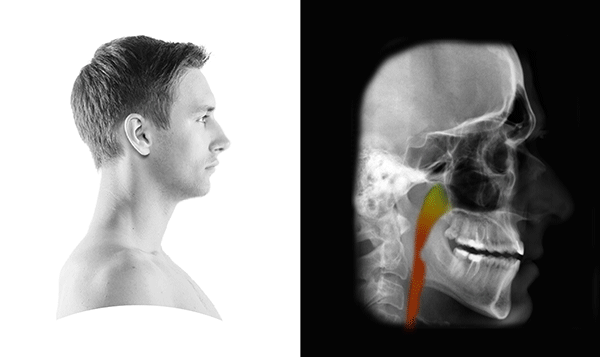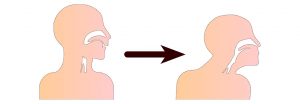 People with narrowed airways are not only prone to obstructive Sleep apneabut also to an overextension of the head. This constant malposition of the head also affects other parts of the body (Cervical spine syndrome). A bimaxillary advancement with CounterClockwise rotation removes the narrowing of the airway and the body usually regains its optimal posture in a very short time. Why is this so?
People with narrowed airways are not only prone to obstructive Sleep apneabut also to an overextension of the head. This constant malposition of the head also affects other parts of the body (Cervical spine syndrome). A bimaxillary advancement with CounterClockwise rotation removes the narrowing of the airway and the body usually regains its optimal posture in a very short time. Why is this so?
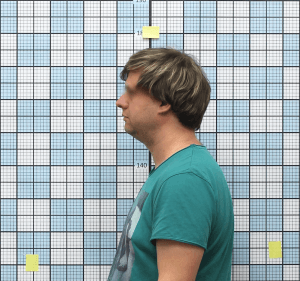
Kopfhaltung vor OP – „Geierhals“
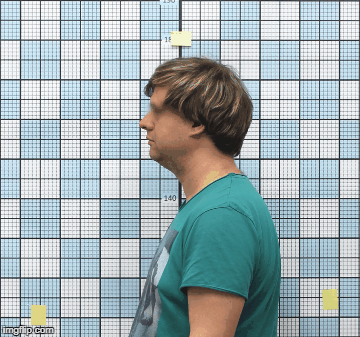
Head posture comparison (before and after surgery)
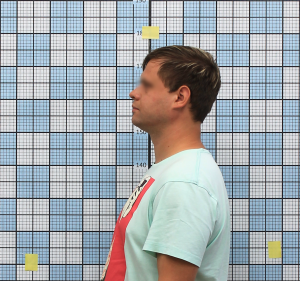
Head posture after surgery
Poor posture (vulture neck) and its causes
Poor posture is a widespread problem in today's world. Typical of this: forward head posture, slumped shoulders, a small hump and belly fat, even if you are young and slim. So far, attempts have been made to justify this with our predominantly sedentary lifestyle to the excessive use of the smartphone. Many theories have been put forward to explain the causes of such a disastrous spread of incorrect posture in our society today. There are now many back straighteners circulating on the internet for posture correction that can be ordered. However, the actual cause of our posture problems is rarely mentioned: a backward position of the jaws! Read on and you will be surprised how this problem and its consequences have become a pandemic.
Incorrect posture has recently become more and more common in civilized societies. Many people have this disorder treated in various ways due to its unpleasant aesthetics. Form follows function: so if you don't like your posture, most likely your health is at risk too! Forward head posture is the failure of the head to align with the vertical axis of the body: For every inch the head is held forward (Figure 1b) (instead of properly balanced across the body), about 2 kg more weight is acting on it, and the back and neck muscles have to work much harder to counteract this misalignment[1]. Because forward posture of the head is chronic, these muscles are overused, resulting in limited neck mobility[2], neck pain [3,4], migraine [5 ], and headaches [6 ].
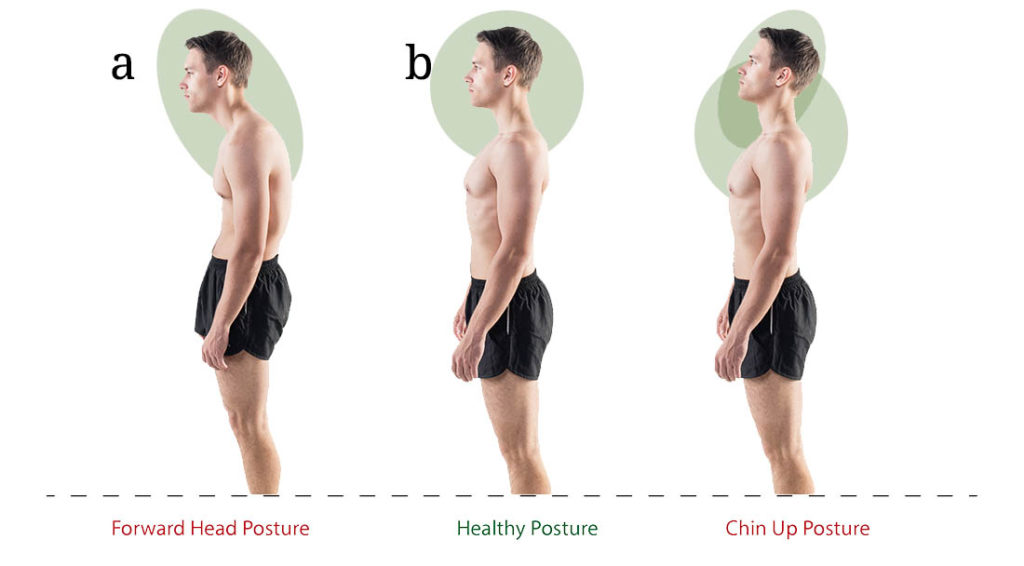
Figure 1: For every centimeter the head is held forward, it gains about 2 kg of weight, which strains the back and neck muscles and leads to limited neck mobility, neck pain, migraines and headaches.
Where does the wrong head posture come from?
There are many theories about this and many different treatments have been developed to improve this condition. However, we rarely hear about the consequences that poor craniofacial development can have on our bodies. Heredity and our modern lifestyle cause the upper jaw to grow downward instead of forward. So vertical growth is encouraged instead of horizontal growth. Bones change due to force impulses[7,8], which, in the case of the maxilla, come mainly from the tongue and teeth (through the masticatory muscles). When these forces are absent, the maxilla falls downward and backward due to gravity. The consequences: Sunken cheekbones, narrowed nasal airway , the middle third of the face becomes longer (long face syndrome) and the palate is lowered which in turn leads to narrowing and subsequently often to malocclusion[9].
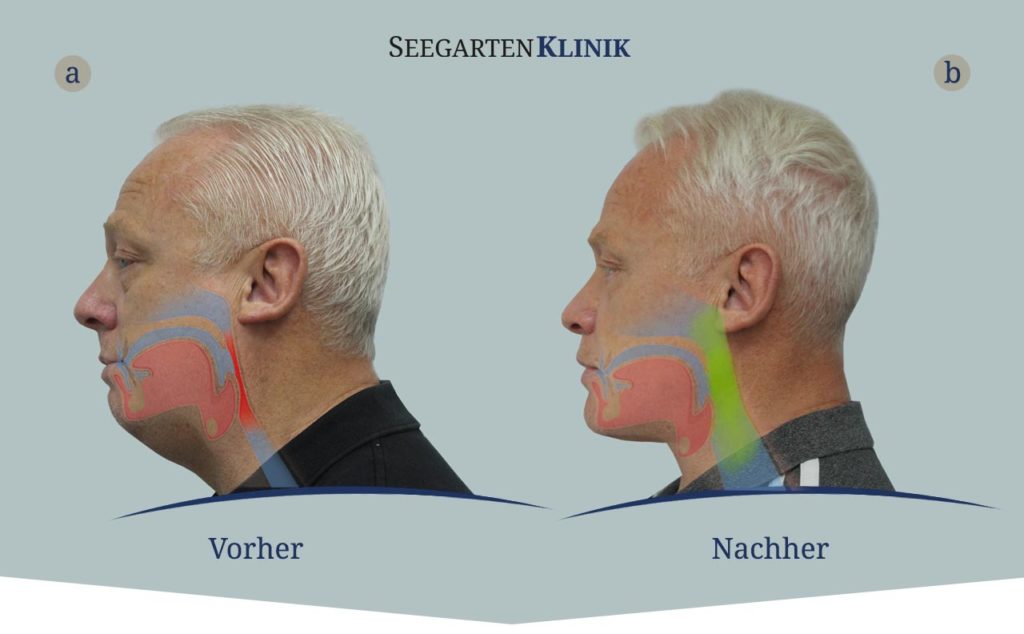
Figure 2: Tongue posture directly affects the development of the upper jaw. When the tongue is correctly positioned on the palate, the upper jaw is pushed up and forward. If the tongue is not in the correct position, the upper jaw will instead lose its power and be pushed down and back (a). After rotation advancement surgery of the jaws, both posture is automatically corrected (b).
The position of the lower jaw is directly dependent on the upper jaw, i.e. when the upper jaw grows down and back, the lower jaw automatically moves back to ensure a chewing function. This leads to temporomandibular joint problems, constricts the airway (including the pharynx, with sleep apnea as a result, and the head tilts forward in a forward head posture (Figure 2a)[11,12,13]. The pharynx also serves as a resonant chamber for the voice, which means that its restriction due to poor jaw development can lead to voice disorders[14].
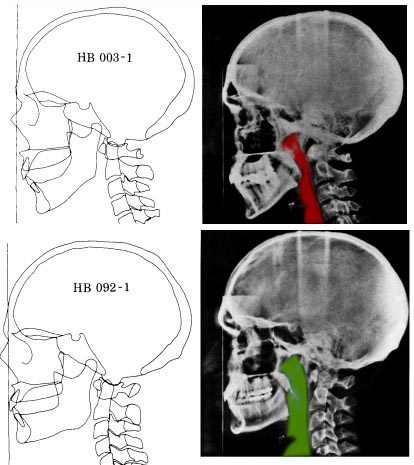
Figure 3: Two patients from the study[13]: Subject HB003 shows vertical growth of the maxilla with facial retrognathia and large mandibular tilt. Note the forward head posture and reduced airway space. Subject HB092 shows forward growth of the maxilla with facial prognathism and a small mandibular tilt. Note the head posture aligned with the cervical spine and the increased airway space.
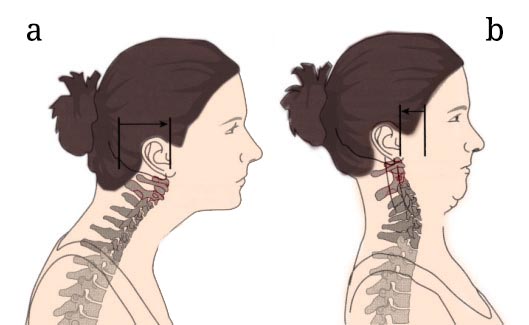
Figure 4: Forward growth of the upper jaw allows the head to better align with the spine, while vertical growth pushes the lower jaw backward and causes the head to be positioned forward. You can better understand this compensation by doing simple exercises with a different head posture and understanding what position your head tends to be in.
People who permanently breathe through the mouth are those who are mainly affected by poor craniofacial development. In fact, breathing through the mouth ensures that those affected have to keep their mouth open and their tongue in a lower position. In this way, only one force acts on the upper jaw: gravity. This causes the upper jaw to grow vertically, pushing the lower jaw back and increasing the lower jaw tilt. The body then compensates for this with a forward head posture[15,16,17,18]. Because the cervical spine and craniofacial development are closely related, their relationship to the hyoid (hyoid) also changes (Figure 5)[19,20]. This has been correlated with asthma[21], sleep apnea[22], and hypertrophic tonsils[23].
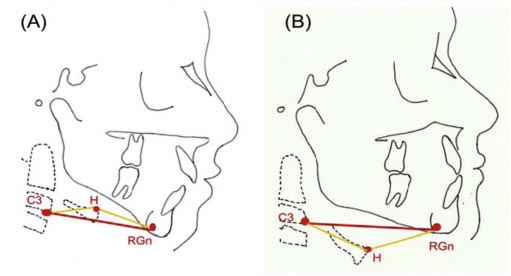
Figure 5: Hyoid triangle tracing: C3, antero-inferior angle of the third cervical vertebra; RGn, retrognathion, posteriormost point of the symphysis of the mandible; H, hyoid, superior and anteriormost points of the hyoid bone. Left: Mouth breathing in children. On the right, children with nasal breathing. Note the different craniofacial development, neck curvature and hyoid position.
Every moment our body has to fight against an invisible force to keep us upright: gravity. When our body finds the perfect balance and equilibrium of forces to counteract the pull of gravity, no movement takes place[26]. This means that a forward head posture has effects on the entire body because the center of gravity is shifted. First, the kyphotic curve increases, which also rounds the shoulders[27]. Then, to compensate for the shift of the upper body, the pelvis tilts forward, increasing the lordotic posture, with consequences down to the feet[28]. In this way, our body finds the center of gravity with a forward head posture.
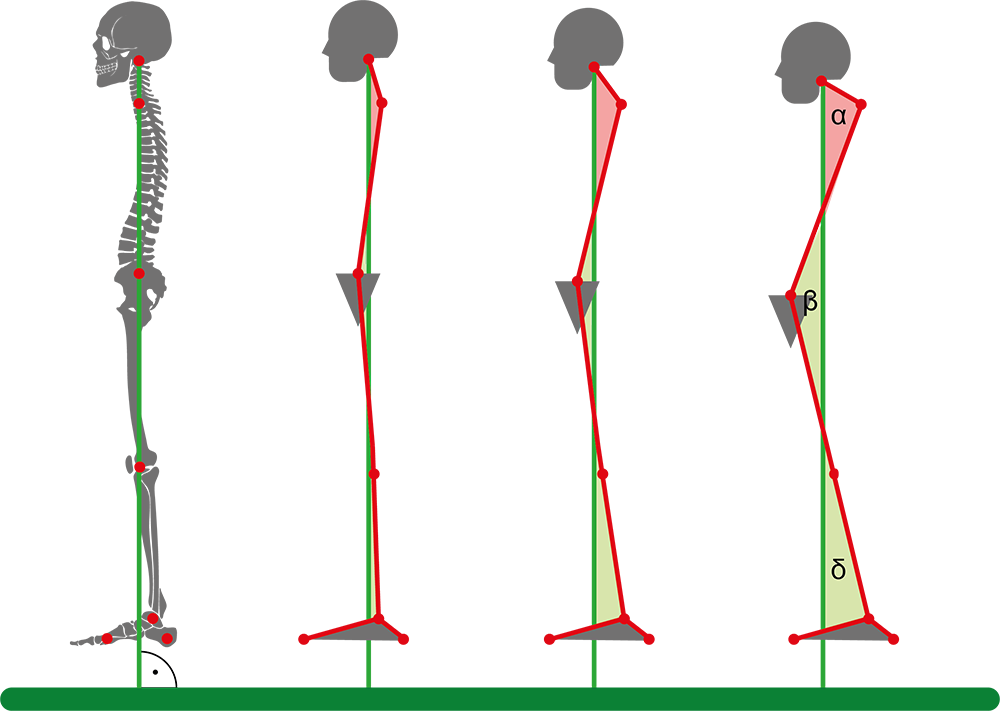
Figure 6: When the head is in a forward head posture, the center of gravity is displaced. To compensate, the body increases the kyphotic curve. Then, due to the displacement of the upper body, the pelvis rotates forward, increasing the lordotic posture.
Misalignment of the body and abnormal myofascial tension worsen the health condition of the body: in our body we have blood vessels, nerves, glands, organs that can be compressed either by overstretched muscles or by misalignment of bones and vertebrae. Think, for example. of large blood vessels leading to the brain that can be compressed by neck muscle tightness[29,30], arteries that can be compressed by vertebral rotation[31,32,33], the spinal cord, which can be compressed by dislocation or subluxation of the vertebrae[34], to lungs whose capacity decreases with increasing kyphosis[35,36], or to compression of the duodenum as a result of increasing lordosis or scoliosis[37]. Thus, it is not an exaggeration to say that a greater spinal inclination with negatively affect daily life[38], cause a lower enjoyment of life[39 ] and even be associated with a higher mortality[40] in older adults.
Chin Up Posture
A so-called Chin Up Posture can also affect the airways. The airways are kept clear at the expense of good and upright posture.
